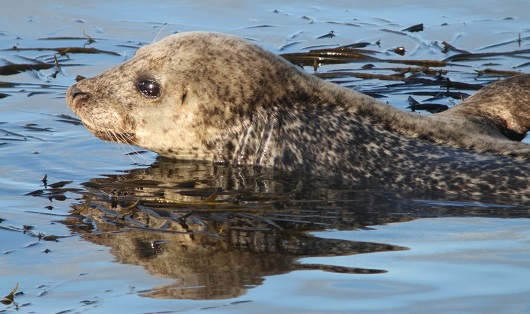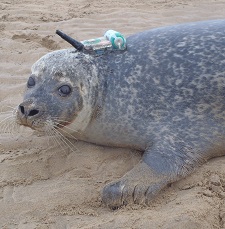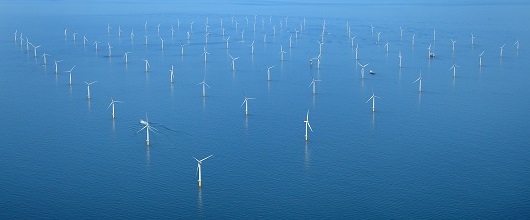Protected seals avoid offshore windfarms during pile driving activities

Seals avoid offshore windfarms during periods when the turbines are installed using pile driving, but return to the area within a matter of hours after pile driving has finished, according to new research by scientists at the University of St Andrews.
The findings have important implications for the windfarm planning consent process and could inform future mitigation strategies.
 These latest findings are from a study where GPS telemetry tags were deployed on harbour seals prior to and during windfarm construction and operation.
These latest findings are from a study where GPS telemetry tags were deployed on harbour seals prior to and during windfarm construction and operation.
Researchers found that due to the loud hammering noise produced by piling the turbine foundations into the seabed seals, for the most part, avoided a 20km area surrounding the windfarm site.
Such avoidance can result in exclusion from important foraging areas or increased travel time to foraging areas. However, previous research has shown that pile driving sounds may be loud enough to cause hearing damage in seals so avoidance may prove to have benefits.
Pile driving bouts in the study typically lasted a few hours at a time. However, outwith these pile driving bouts, seals did not avoid windfarms, limiting the magnitude of negative consequences of exclusion as long as there are sufficient breaks in piling.
Dr Debbie Russell from the Sea Mammal Research Unit (SMRU) at the University of St Andrews who led the research said: “We were able to calculate a relationship between the noise levels we expected seals to hear and the degree to which seals were excluded.
“Seals are protected by European law and our findings will be used by the regulators and the marine renewable industry to more accurately predict the effect of particular windfarms on seals.
“Furthermore, the results can also be used to minimise the effects of windfarm construction on seals.
“For example, now we have a good idea of what sound levels cause seals to be displaced, engineering solutions can be focussed on reducing sound levels to below the displacement threshold.
“In addition, the results of this study should inform the construction schedule of windfarms to minimise impact of seals. It is essential to have breaks in piling that allow seals to forage and travel unhindered. This is especially important during concurrent construction of multiple windfarms in an area.

“Further studies are required to understand if there is an effect of windfarm construction on the population size of seals.”
Notes to news editors
‘Avoidance of windfarms by harbour seals is limited to pile driving activities’ is published in the Journal of Applied Ecology.
Photo credits: seal images, Monica Arso, SMRU; windfarm image, Mike Page.
Issued by the University of St Andrews Communications Office, contactable on 01334 467310 or [email protected].
Category Research